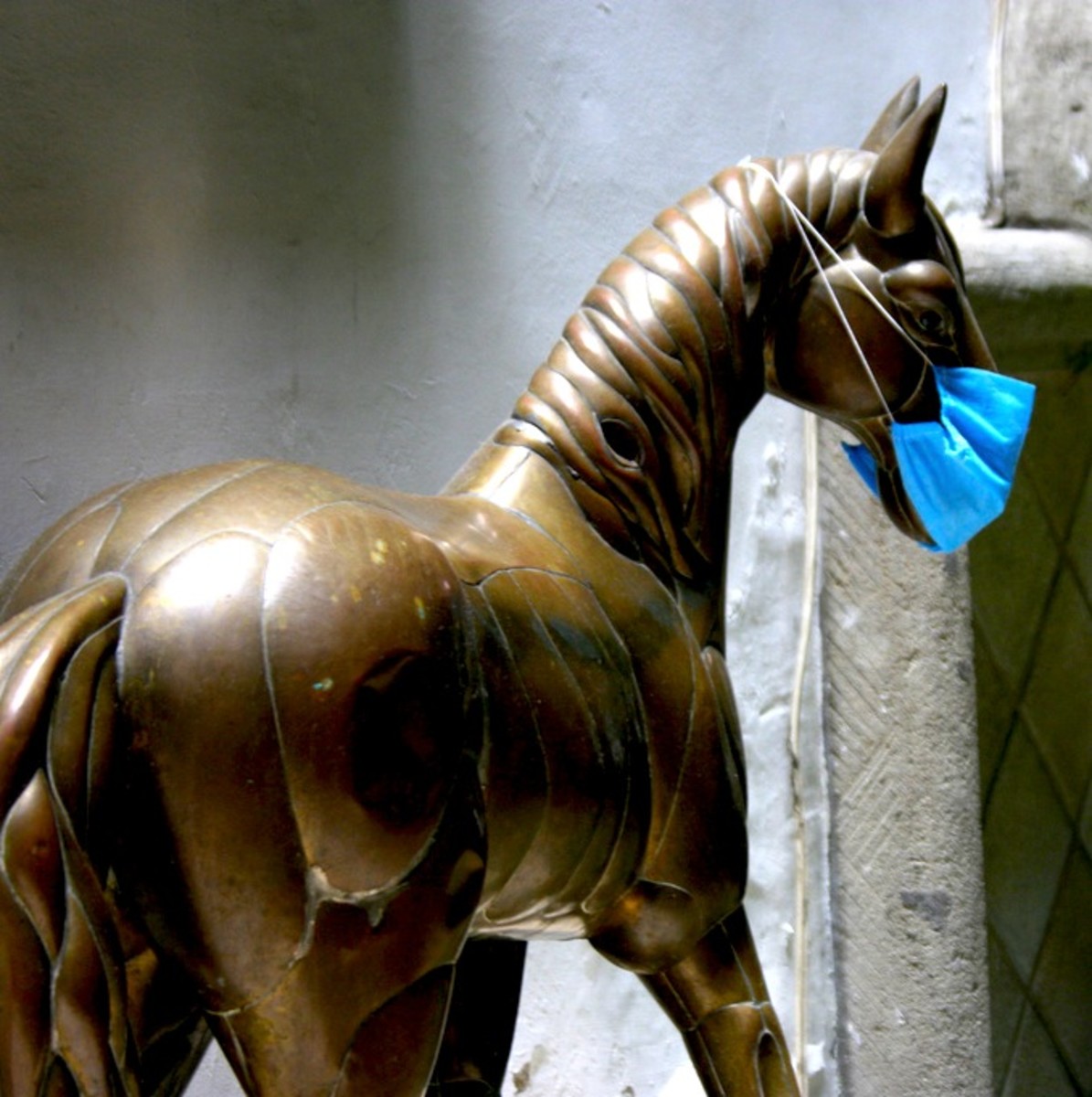Can We Predict, Prevent and Minimize Equine Influenza Outbreaks?
- March 10, 2017
- ⎯ Fran Jurga
This is the time of year when the signs pop up along the entries to shopping malls, reminding us to get our flu shots. The Washington International Horse Show had a contagious cold that affected many participants, and you can bet that the upcoming Equine Affaire will have a “creeping crud”, as well. We believe that a flu shot will protect us in the event of a widespread epidemic of a specific type of flu, and if the flu strain matches the vaccine, the shot will have fulfilled its promise.

So far, our horses have enjoyed a quiet fall. We’re just entering the time of year when massive shipments of horses to the southern training and competition centers are set to begin. Some form of contagious equine disease is almost always in the news in November. Most of us don’t think much about coughing when we do it, but it’s not something that we want our horses to do. But as they begin to spend more time indoors in dusty stalls and indoor arenas?and new horses come to barns for the winter training, contagious diseases and runny noses are likely to happen.

Equine influenza or “flu” is one of those diseases; most of us opt to vaccinate for it if our horses come into contact with other horses on a regular basis.
If your horse is stricken with equine influenza, you might not think immediately about mathematical formulas. You’ll be too busy cursing your luck and your horse’s proximity to carrier horses–and checking his temperature.
A deep hacking cough, a runny nose and fever ? just like humans, horses can suffer badly when struck down by the flu. Although equine influenza is rarely fatal, it is highly contagious and can seriously disrupt training and competition schedules and result in huge revenue losses for the equine industry.
Dr Janet Daly, BVSc, Lecturer in Comparative Virology?at?The University of Nottingham’s School of Veterinary Medicine and Science is lead author on a state-of-the-art review suggesting how mathematical modelling might help us bring horse flu under control and protect our horses effectively.
The review, entitled?“What can mathematical models bring to the control of equine influenza?”, has been published in the Equine Veterinary Journal. It confirms what we already know, ?that vaccination reduces the occurrence and limits the extent of outbreaks, but also contends that vaccines could be administered more strategically and should contain currently circulating strains of virus.
Daly’s article states that protection afforded by equine flu vaccines is not as straightforward as we might think, and that the flu virus has an ability to mutate, making older vaccines less effective. None of the vaccines currently on sale in the United Kingdom have the most recently recommended strains, and only one vaccine in the United States achieves this, according to Daly.
How does the model work? Daly is able to use models to predict what will happen if a single horse with EI comes into contact with a group of 100 unvaccinated horses. Perhaps the greatest value of her study is to see how the presence of vaccinated horses affect the progression of the outbreak. This, of course, is dependent on the vaccine being effective for the strain of the virus.
Daly said: “This study will help further our understanding of how to better protect horses against the effects of equine influenza. Mathematical modellers have to make some assumptions in developing models, but models are informed by and tested against real data. As a virologist, I find the questions about the data they need to generate their models challenge me to think differently about the disease.”
Daly’s review collates the findings from numerous studies over the past ten years in which mathematical models were used to project how influenza outbreaks are likely to progress in different circumstances and illustrates how this technique can be used to help inform decision-making on prevention and outbreak management.
Let’s hope we never add another outbreak to her list of models, but her work is an excellent reminder of how vulnerable our horses can be to this disease, and for our need to keep biosecurity plans and practices in mind and in place.





